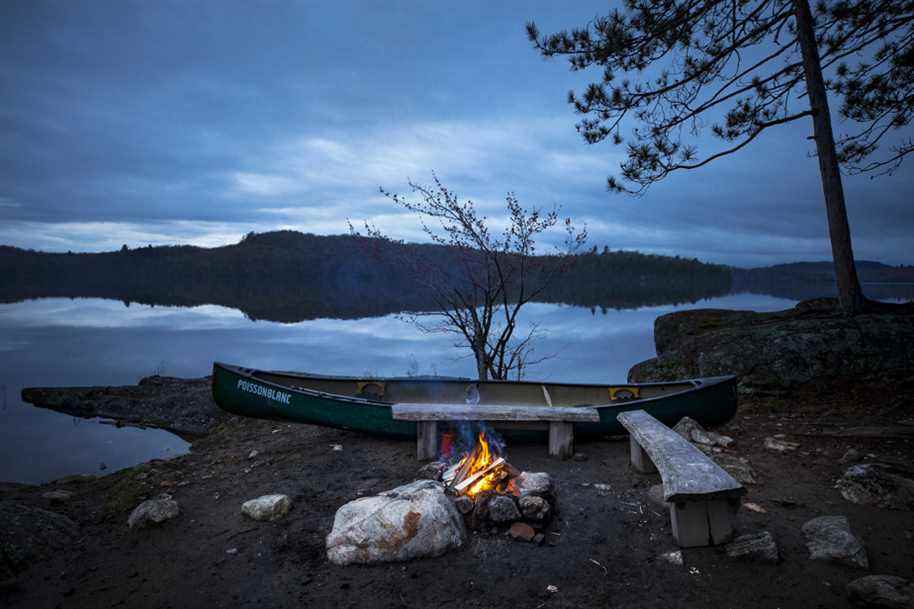The photo, posted on social networks, was beautiful: a young child who had been placed under a curtain of turquoise ice in the heart of the gorges of the Sainte-Anne River.
Posted at 11:30 a.m.
Many ice climbers have choked on their coffee when they saw this image: they would never go to this place without a good helmet and without having assessed the risk of ice fall.
Last winter, the publication of photos of the pretty waterfalls in the Sainte-Anne river gorges sector caused such crowds that the Portneuf Regional Natural Park had to put in place several measures to avoid overflows.

HUGO-SÉBASTIEN AUBERT PHOTO, PRESS ARCHIVES
The ice curtains, like this one at the Coaticook Gorge, are very beautiful. But they can be very dangerous. If ice climbers wear helmets, there’s a good reason.
This is not the first time that photos posted on social networks have resulted in an influx of visitors, sometimes to the detriment of their safety, sometimes to the detriment of the environment.
“In western Canada and the United States, there have been accidents,” says Danielle Landry, master instructor of the Leave No Trace principles and founder of De ville en forêt, a small company specializing in reducing the environmental impact of outdoor activities and events. “People have geolocated sites that were a bit dangerous. Other people then put themselves in danger because they did not have sufficient technical skills for such places. ”
But it is above all the environment that suffers when too many people converge on the same place. “Beauty, well captured in an image, will attract people to certain places,” says Mme Landry. It can be great great landscapes, it can be the presence of a particular species of fauna. It can have consequences if people don’t behave responsibly. ”

PHOTO PHILIPPE BOIVIN, SPECIAL COLLABORATION
Danielle Landry, Founder of From Town to Forest and Master Instructor of the Leave No Trace Principles
The problem is that some photos illustrate harmful behavior. “It magnifies these behaviors,” says Danielle Landry. We want to be one of those who do like that. ”
This is how we sometimes see people trampling the vegetation, or putting up a tent on top of a mountain, in the middle of a fragile carpet of moss, or lighting a fire in an inappropriate place.
And videos and drone images further idealize these practices.
Adopt the right behaviors

PHOTO EDOUARD PLANTE-FRÉCHETTE, ARCHIVES THE PRESS
Sometimes, on social networks, we see photos of people trampling or outright camping on the moss of the summits. This photo, taken in Charlevoix, shows instead a hiker walking on a solid surface.
A small review of the Leave No Trace principles is in order. This is not a list of regulations, but of major principles that must be understood in order to then decide for yourself what behavior to adopt, specifies Mr.me Landry.
Here are the famous seven principles: prepare and plan, use sustainable surfaces, manage waste properly, leave what you find intact, minimize the impact of fires, respect wildlife and respect other users.
There are also principles, under the name Nature First, which are particularly aimed at nature photographers and which fully apply to the photos we publish on social networks.
It is above all about putting the well-being of nature before photography. You should also learn about the place you are visiting and think about the repercussions of your actions. You also need to be discreet when it comes to locating a place. Obviously, you have to follow the regulations in force, follow the Leave No Trace principles and educate others about all of these principles.
Because the photos posted on social networks can very well highlight good behavior. For example, hikers wading through the middle of a somewhat muddy trail instead of walking on off-trail vegetation.
A beautiful photo

PHOTO DAVID BOILY, PRESS ARCHIVES
On social media, we see relatively few photos of bad weather outdoors. This gives a distorted picture of the experience.
But there is another problem here. On social media, we don’t often see pictures of exhausted hikers covered in mud trying to pitch a fireproof tent in the pouring rain.
Of course, now is not the perfect time to pull out a camera or cell phone. But there is more. “People are less tempted to show the reality of the outdoor experience, the everyday,” says Danielle Landry.
The photos we find on social networks tend to idealize the outdoor experience, at the risk of causing a nasty surprise to neophytes who go there and find that nature can sometimes be hostile.
Another problem, those beautiful images of outdoor enthusiasts with expensive clothing and equipment, in colors that coordinate beautifully, can also put off beginners.
“It makes the idea of the outdoors a little inaccessible for the person who only has ordinary equipment, who does not have a $ 400 coat,” says Mme Landry.
In short, outdoor enthusiasts can do a little thoughtfulness before posting a photo on social networks. But site managers and tourism promoters also have a role to play: their photos also have great power.
Video suggestion
Kayaking in winter
Just because it’s winter doesn’t mean you can’t go whitewater kayaking. Ask professional kayaker Nouria Newman.
Number of the week
1
This is the number of ski poles used by the first skiers. In some areas, skiers sharpened this stick and used it for hunting. It would be amazing to see that on the slopes today!

